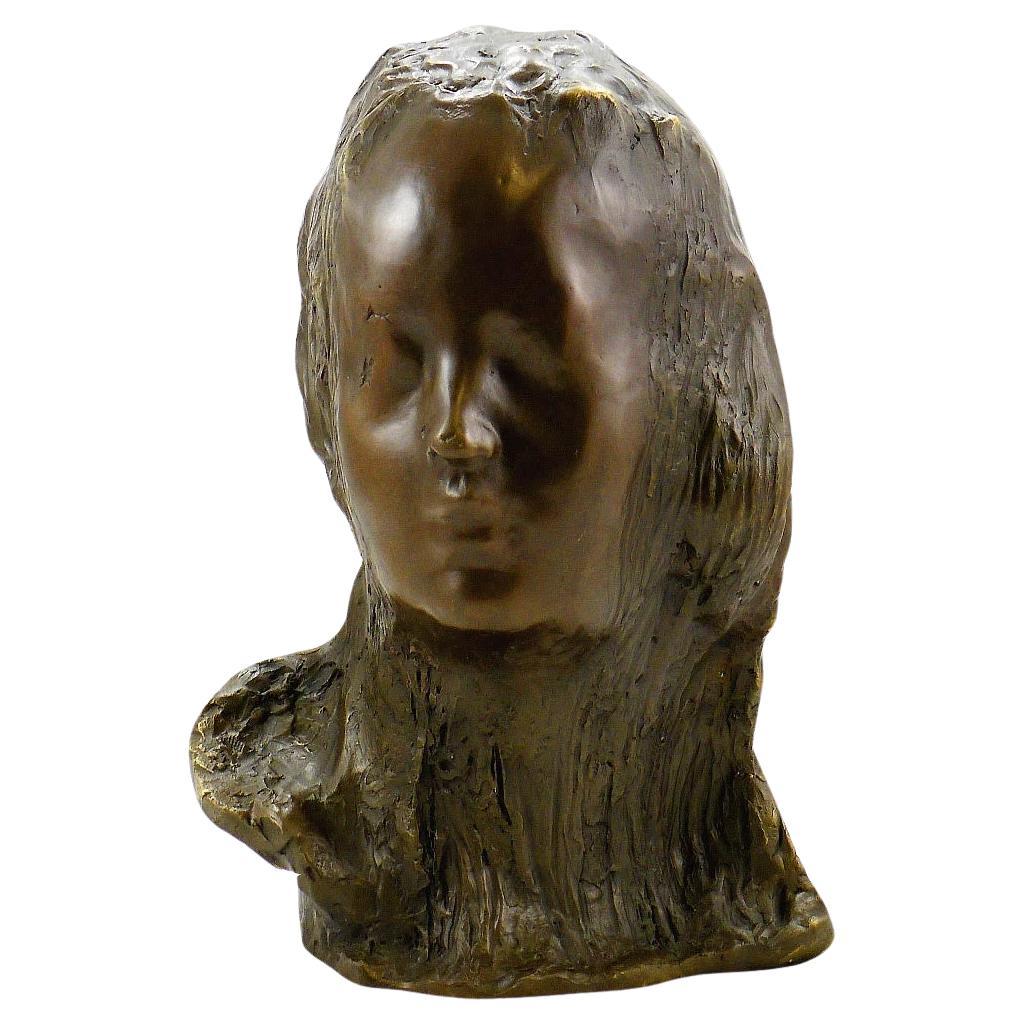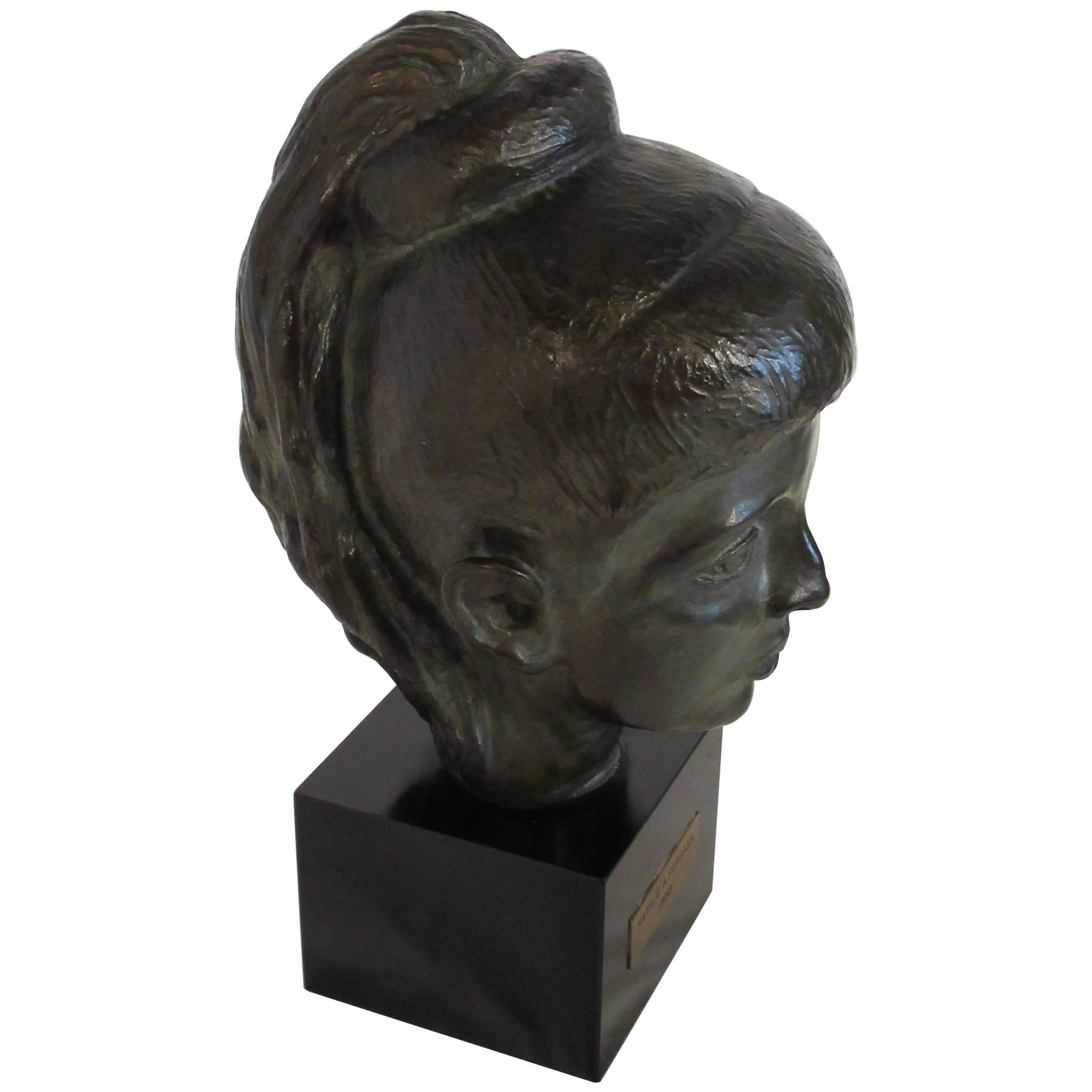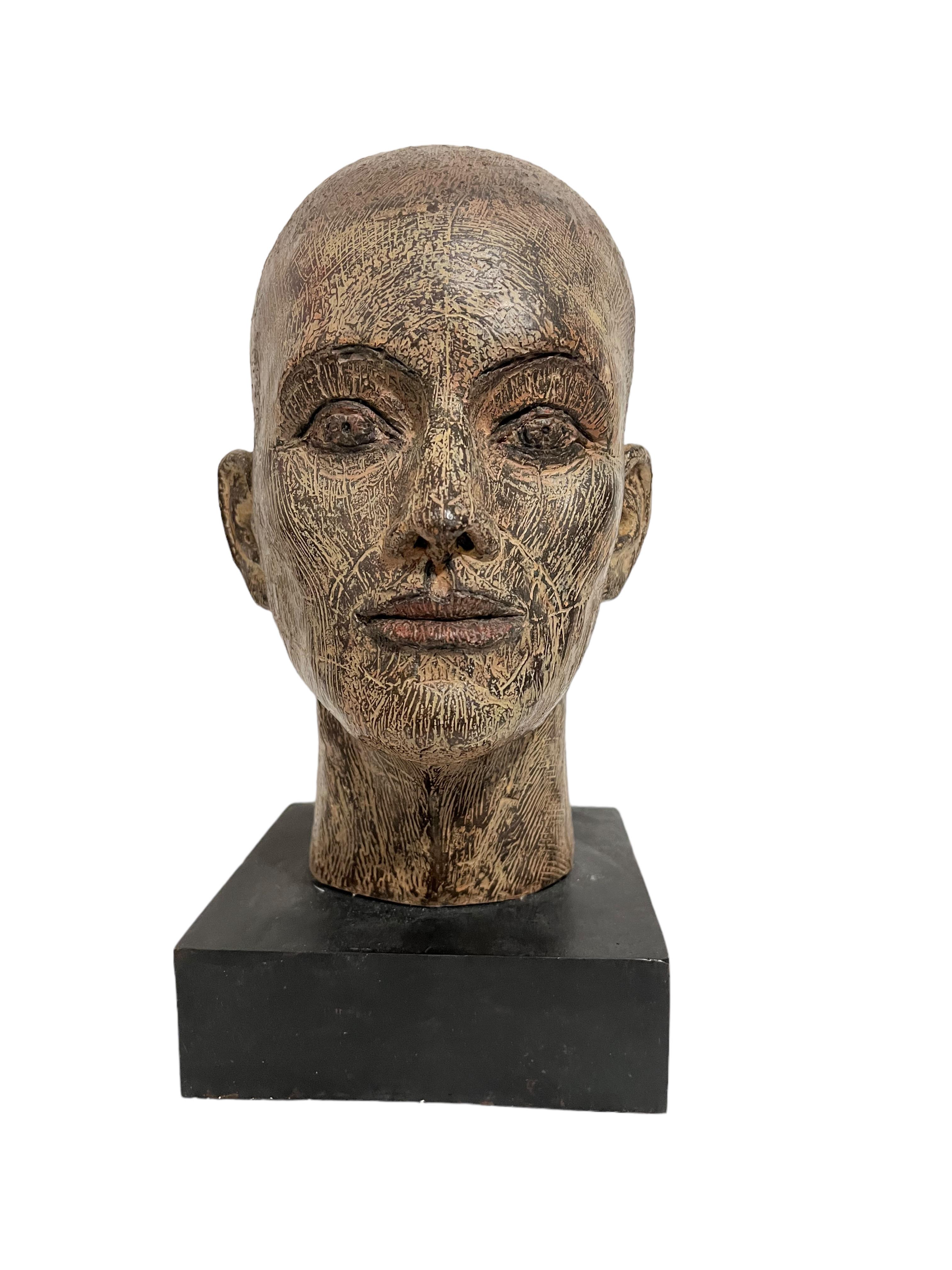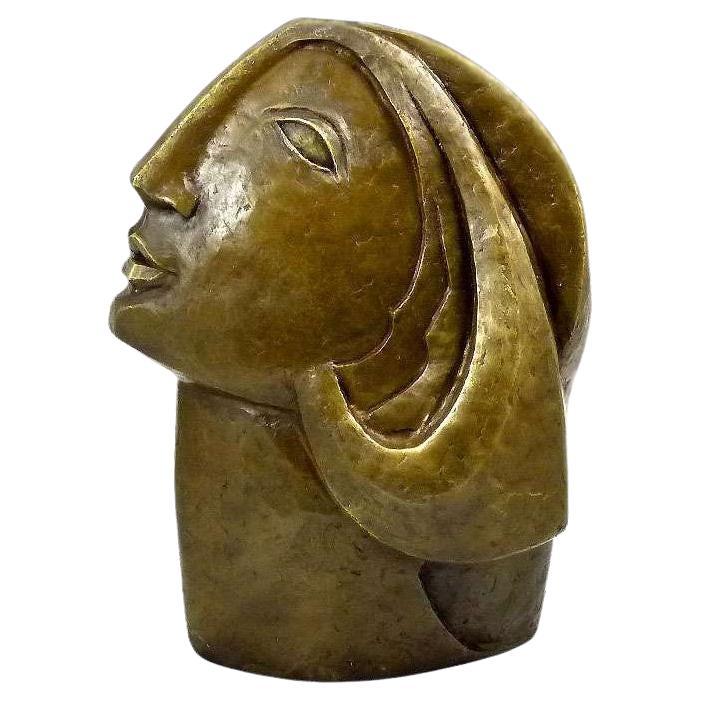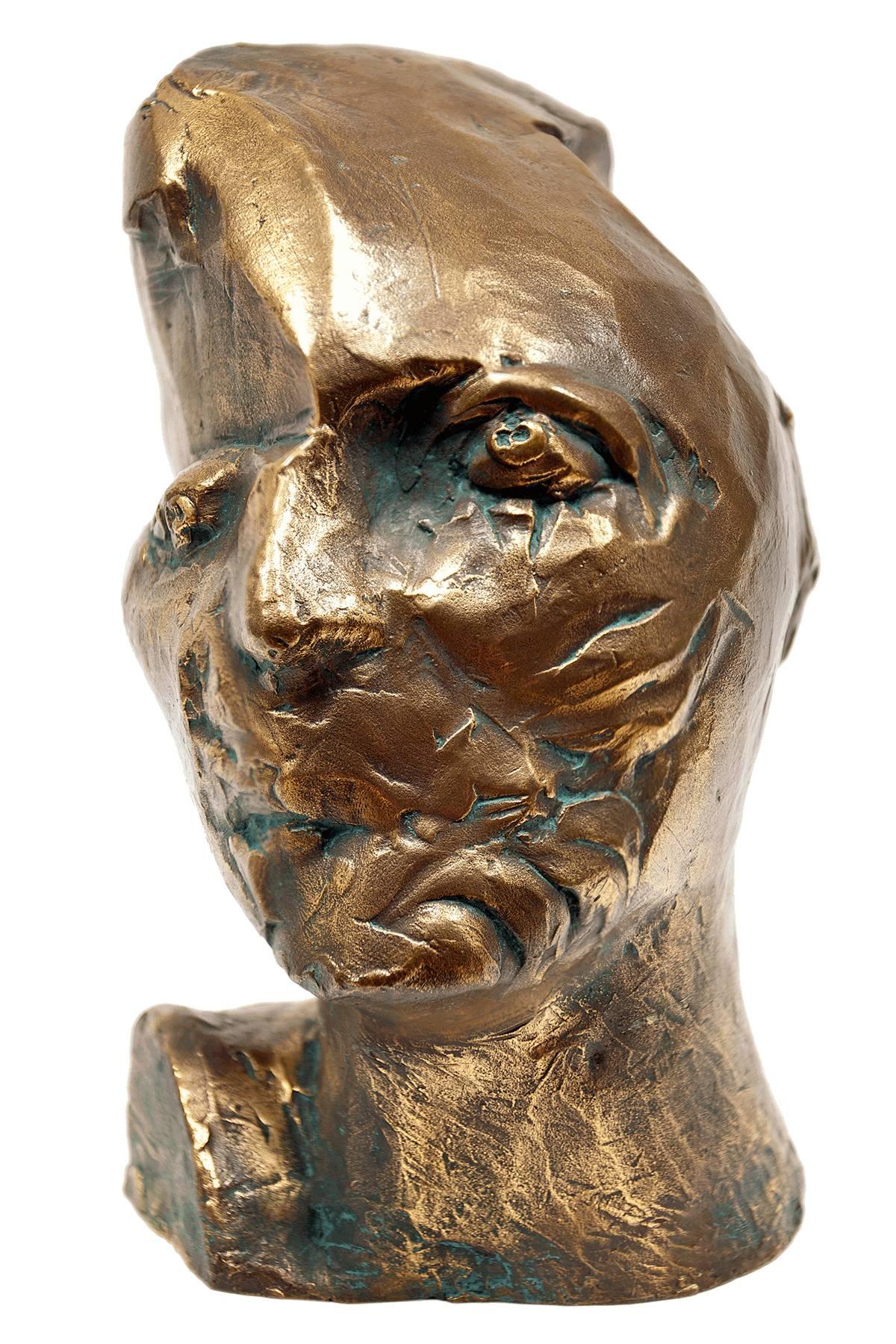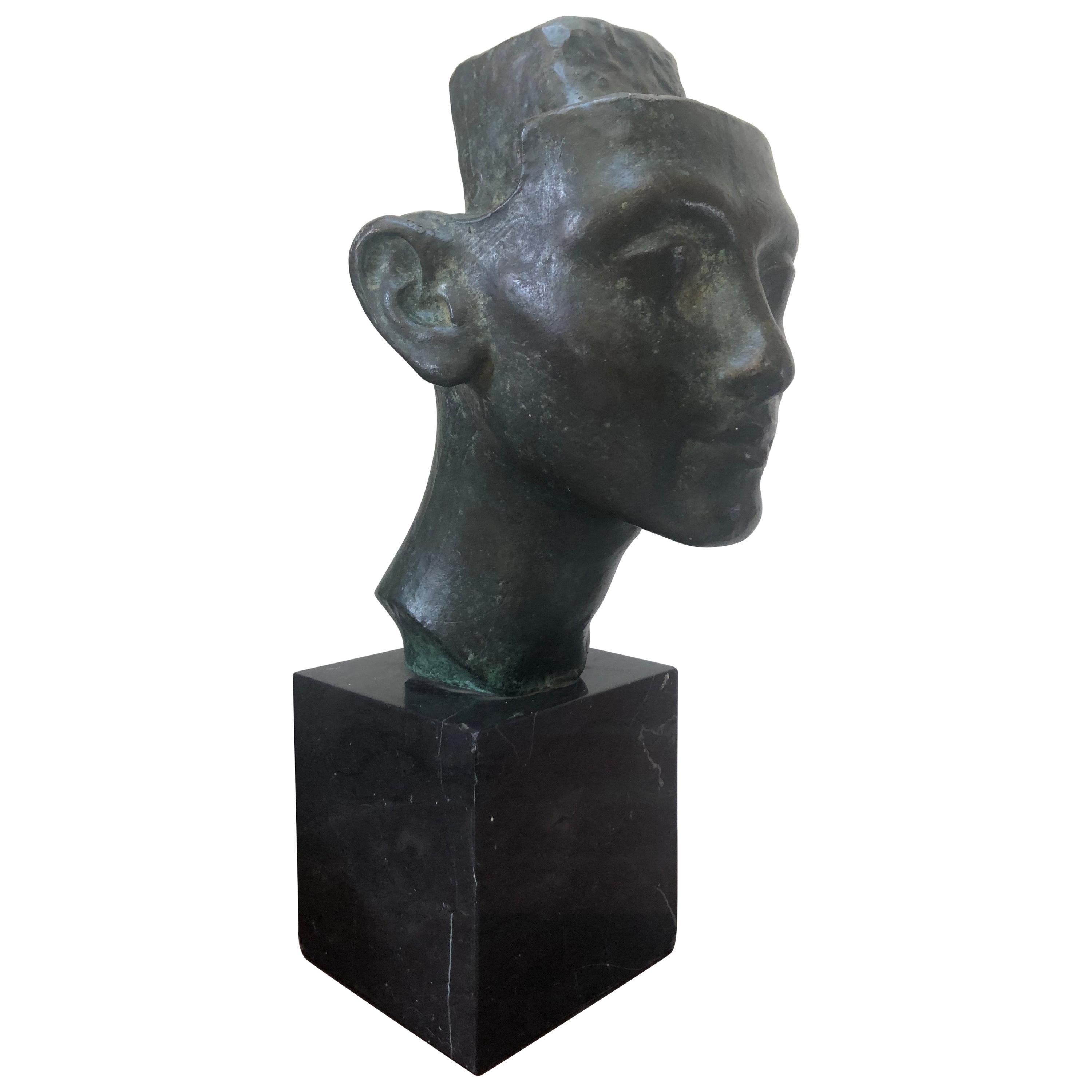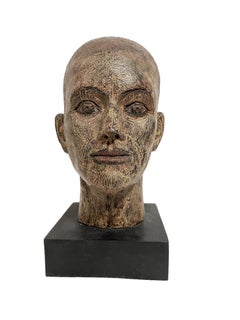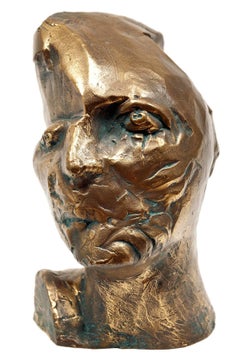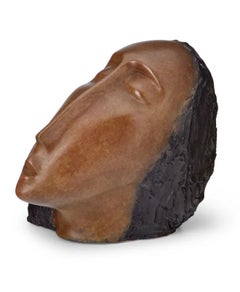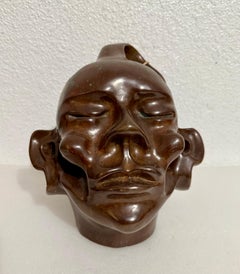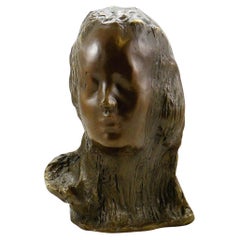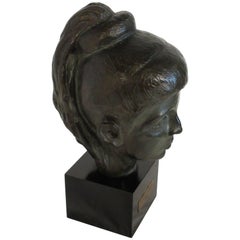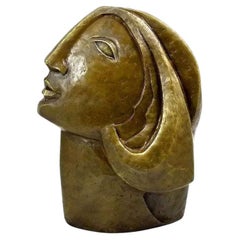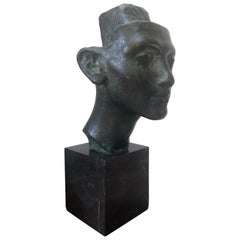Items Similar to Small Bronze Sculpture Cast Head After Rodin "Petite tete au nez retrousse"
Want more images or videos?
Request additional images or videos from the seller
1 of 15
Small Bronze Sculpture Cast Head After Rodin "Petite tete au nez retrousse"
$1,800
£1,364.65
€1,573.08
CA$2,535.01
A$2,811.14
CHF 1,477.05
MX$34,347.35
NOK 18,479.85
SEK 17,346.50
DKK 11,743.33
About the Item
(after) Auguste Rodin
Posthumous cast
"Petite tete au nez retroussé"
Featuring a bust of a woman.
Limited edition bronze is mounted on a marble base and is signed on the lower right. Great detail.
Dimensions: approx. 7-1/4" tall x 5" across x 5" deep with base
Foundry mark on the reverse, #13 of 299 produced.
François Auguste René Rodin (1840 – 1917) was a French sculptor generally considered the founder of modern sculpture. Rodin possessed a unique ability to model a complex, turbulent, and deeply pocketed surface in clay. He is known for such sculptures as The Thinker, Monument to Balzac, The Kiss, The Burghers of Calais, and The Gates of Hell. He modeled the human body with naturalism, and his sculptures celebrate individual character and physicality. Although Rodin was sensitive to the controversy surrounding his work, he refused to change his style, and his continued output brought increasing favor from the government and the artistic community.
Rodin became the preeminent French sculptor of his time. By 1900, he was a world-renowned artist. Wealthy private clients sought Rodin's work after his World's Fair exhibit, and he kept company with a variety of high-profile intellectuals and artists. His student, Camille Claudel, became his associate, lover, and creative rival. Rodin's other students included Antoine Bourdelle, Constantin Brancusi, and Charles Despiau.
Rodin entered the studio of Albert-Ernest Carrier-Belleuse, a successful mass producer of objets d'art. Rodin worked as Carrier-Belleuse' chief assistant until 1870, designing roof decorations and staircase and doorway embellishments. With the arrival of the Franco-Prussian War, Rodin was called to serve in the French National Guard, but his service was brief due to his near-sightedness. Rodin took classes with animal sculptor Antoine-Louis Barye. The teacher's attention to detail and his finely rendered musculature of animals in motion significantly influenced Rodin. Rodin won the 1880 commission to create a portal for a planned museum of decorative arts. Rodin dedicated much of the next four decades to his elaborate Gates of Hell, an unfinished portal for a museum that was never built. Many of the portal's figures became sculptures in themselves, including Rodin's most famous, The Thinker and The Kiss. With the museum commission came a free studio, granting Rodin a new level of artistic freedom.
By 1900, Rodin's artistic reputation was established. Gaining exposure from a pavilion of his artwork set up near the 1900 World's Fair (Exposition Universelle) in Paris, he received requests to make busts of prominent people internationally, As Rodin's fame grew, he attracted many followers, including the German poet Rainer Maria Rilke, and authors Octave Mirbeau, Joris-Karl Huysmans, and Oscar Wilde.
Rodin and Beuret's modest country estate in Meudon, purchased in 1897, was a host to such guests as King Edward, dancer Isadora Duncan, and harpsichordist Wanda Landowska. He left Beuret in Meudon and began an affair with the American-born Duchesse de Choiseul. From 1910, he mentored the Russian sculptor, Moissey Kogan.
During his later creative years, Rodin's work turned increasingly toward the female form, and themes of more overt masculinity and femininity. He concentrated on small dance studies, and produced numerous erotic drawings, sketched in a loose way, without taking his pencil from the paper or his eyes from the model. Rodin met American dancer Isadora Duncan in 1900, attempted to seduce her, and the next year sketched studies of her and her students.
Rodin willed to the French state his studio and the right to make casts from his plasters. Because he encouraged the edition of his sculpted work, Rodin's sculptures are represented in many public and private collections. The Musée Rodin was founded in 1916 and opened in 1919 at the Hôtel Biron, where Rodin had lived, and it holds the largest Rodin collection, with more than 6,000 sculptures and 7,000 works on paper. The French order Légion d'honneur made him a Commander, and he received an honorary doctorate from the University of Oxford.
During his lifetime, Rodin was compared to Michelangelo, and was widely recognized as the greatest artist of the era. Rodin had enormous artistic influence. A whole generation of sculptors studied in his workshop. These include Gutzon Borglum, Antoine Bourdelle, Constantin Brâncuși, Camille Claudel, Charles Despiau, Malvina Hoffman, Carl Milles, François Pompon, Rodo, Gustav Vigeland, Clara Westhoff and Margaret Winser, Rodin also promoted the work of other sculptors, including Aristide Maillol and Ivan Meštrović whom Rodin once called "the greatest phenomenon amongst sculptors." Other sculptors whose work has been described as owing to Rodin include Joseph Csaky, Alexander Archipenko, Joseph Bernard, Henri Gaudier-Brzeska, Georg Kolbe, Wilhelm Lehmbruck, Jacques Lipchitz, Pablo Picasso, Adolfo Wildt, and Ossip Zadkine. Henry Moore acknowledged Rodin's seminal influence on his work. Several films have been made featuring Rodin as a prominent character or presence. These include Camille Claudel, a 1988 film in which Gérard Depardieu portrays Rodin, Camille Claudel 1915 from 2013, and Rodin, a 2017 film starring Vincent Lindon as Rodin. Furthermore, the Rodin Studios artists' cooperative housing in New York City, completed in 1917 to designs by Cass Gilbert, was named after Rodin.
- Dimensions:Height: 7.25 in (18.42 cm)Width: 5 in (12.7 cm)Depth: 5 in (12.7 cm)
- Medium:
- Movement & Style:
- After:Auguste Rodin (1840 - 1917, French)
- Period:
- Condition:
- Gallery Location:Surfside, FL
- Reference Number:1stDibs: LU38213962742
About the Seller
4.9
Platinum Seller
Premium sellers with a 4.7+ rating and 24-hour response times
Established in 1995
1stDibs seller since 2014
1,801 sales on 1stDibs
Typical response time: <1 hour
- ShippingRetrieving quote...Shipping from: Surfside, FL
- Return Policy
Authenticity Guarantee
In the unlikely event there’s an issue with an item’s authenticity, contact us within 1 year for a full refund. DetailsMoney-Back Guarantee
If your item is not as described, is damaged in transit, or does not arrive, contact us within 7 days for a full refund. Details24-Hour Cancellation
You have a 24-hour grace period in which to reconsider your purchase, with no questions asked.Vetted Professional Sellers
Our world-class sellers must adhere to strict standards for service and quality, maintaining the integrity of our listings.Price-Match Guarantee
If you find that a seller listed the same item for a lower price elsewhere, we’ll match it.Trusted Global Delivery
Our best-in-class carrier network provides specialized shipping options worldwide, including custom delivery.More From This Seller
View AllRare Cast Painted Bronze Head Sculpture British Realist Sculptor John Davies
Located in Surfside, FL
John Davies (Cheshire, 1946), British sculptor.
Bronze sculpture head
Unique cast (1/1)
This was shown at Marlborough Fine Art (London) Ltd in a show called John Davies New Sculpt...
Category
1990s Figurative Sculptures
Materials
Bronze
Untitled, Head Of An Artist, Avant-Garde Bronze Sculpture
By Phillip Pavia
Located in Surfside, FL
This is a bronze cast sculpture by Philip Pavia is part of his series of "Imaginary Portraits from the Club" , a one-man exhibition at Max Protetch Gallery, New York in 1982. The approach at rendering the figure is grotesque, and the facial features have been severely distorted to the point were the portrait becomes an abstract interpretation of the subject.
As an artist and writer, Philip Pavia was a committed member of the Abstract Art community throughout his long, distinguished career. Pavia was active in the art world until his death in 2005 and received immense critical praise for his artistic and literary contributions. Recognized for his signature work The Ides of March...
Category
20th Century Abstract Expressionist Figurative Sculptures
Materials
Bronze
Large Bronze Sculpture Woman Head, After Modigliani, Ruth Bloch Israeli Artist
By Ruth Bloch
Located in Surfside, FL
Ruth Bloch (b. 1951)
Head of a woman (After Modigliani)
Bronze with patina
Edition: 3/9
Hand etched signature and edition near base: R Bloch
(titled by the artist as "Inspired by Mod...
Category
20th Century Contemporary Figurative Sculptures
Materials
Bronze
New Zealand Modernist Abstract Bronze Maori Head Sculpture Colin Webster Watson
Located in Surfside, FL
Colin Webster-Watson (1926, Palmerston North, New Zealand – 2007, Eastbourne) Sculpture portrait of a head, This appears to be a native New Zealander, A Maori Warrior. It is not numb...
Category
1960s Modern Abstract Sculptures
Materials
Bronze
Art Deco Expressionist Bronze Judaica Rabbi Sculpture Los Angeles Modernist
By Peter Krasnow
Located in Surfside, FL
Bronze Jewish Rabbi. Original Patina. Art-deco wood carved base. It is signed with initials P.K. and marked "Calif Art Bronze Fdry LA" (California Art Bronze Foundry Los Angeles). it is not dated.
PETER KRASNOW (1886-1979), Russian-Ukrainian, American artist painter and sculptor, born Feivish Reisberg, was a California modernist and colorist artist known for his abstract wood sculptures and architectonic hard-edge paintings and drawings which were often based on Hebrew calligraphy and other subjects related to his Jewish heritage...
Category
1930s Expressionist Figurative Sculptures
Materials
Bronze
Vintage 1967 1970 Modernist Maquette Chicago Picasso Cubist Sculpture Head Metal
By (after) Pablo Picasso
Located in Surfside, FL
This is a model of the large Picasso sculpture in Chicago it is a vintage piece. it is marked 1967 and was made for the Chicago Public Building Commission (it is also marked Handigu...
Category
1960s Modern Abstract Sculptures
Materials
Metal
You May Also Like
Sculpture of a Female Bust in Patinated Bronze, Contemporary Art, 21st Century.
Located in Saint-Ouen, FR
Sculpture of a female bust in patinated bronze, contemporary art, 21st century.
Sculpture of a female bust in patinated bronze, contemporary art, 21st century.
h : 37cm, w : 26cm, d...
Category
21st Century and Contemporary French Modern Busts
Materials
Bronze
1980s Bronze Bust of Female
Located in Tarrytown, NY
1980s bronze bust of female on wood base and tagged.
Category
Vintage 1980s Busts
Sculpture of a Woman's Head in Patinated Bronze after Picasso, 21st Century.
Located in Saint-Ouen, FR
Sculpture of a woman's head in patinated bronze after Picasso, contemporary art, 21st century.
Sculpture of a woman's head in patinated bronze after Picasso, contemporary art, 21st ...
Category
21st Century and Contemporary French Modern Busts
Materials
Bronze
Unique Bronze Head Sculpture on Marble Solid Base
Located in San Diego, CA
Fine detail, lovely factions and subtle smile on this rare bronze head sculpture
Fix to a black marble base.
Category
Mid-20th Century American Mid-Century Modern Figurative Sculptures
Materials
Marble, Bronze
$2,280 Sale Price
20% Off
Self Confidence Bronze Sculpture Head Portrait State of Mind Classic In Stock
By Margot Homan
Located in Utrecht, NL
Self Confidence Bronze Sculpture Head Portrait State of Mind Classic In Stock
The sculptures of Margot Homan (1956, Oss) show a perfect comman...
Category
21st Century and Contemporary Contemporary Figurative Sculptures
Materials
Bronze
Mid Century Bronze Statue by J.G. Kendall, Cast by Gorham
Located in Tampa, FL
A beautifully cast mid century bronze statue by J.G. Kendall, produced by the renowned Gorham Company. Dating to the 1940s–1950s, this charming piece depicts a young girl with pigtai...
Category
Vintage 1950s American Busts
Materials
Marble, Bronze
More Ways To Browse
Small Sculpture Vintage
Small French Sculpture
Bronze Head Sculptures
Small Head Sculpture
Small Marble Sculpture
Cast Bronze Marble Sculpture
Brancusi Sculpture
Cast Plaster Sculpture
Plaster Art Casts
Head Of A Woman Sculpture
Bronze Cast Body Sculpture
Female Head Sculpture
Sculpture Guard
Bronze Sculpture 1910
Plaster Head Sculpture
5 Tall Sculpture
Bronze Head Female
Russian Cast
